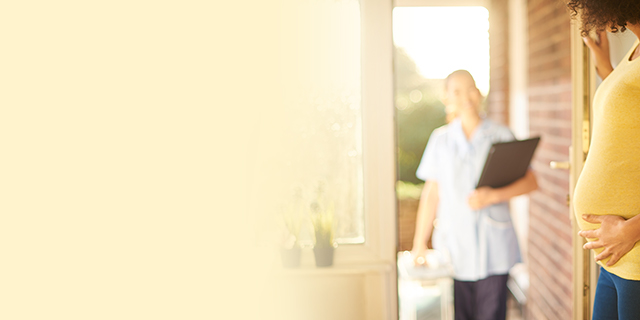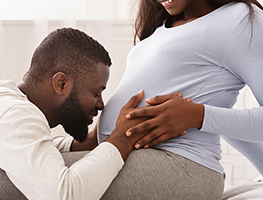The first stage of labour is usually the longest part of the birthing process by far. With your first child, labour is generally longer than your second and subsequent births, with an ‘average’ labour for first-time mothers around 12-14 hours, although anything from 2-20 hours is pretty normal.
The first stage of labour is often described as having three distinct phases:
In the early phase contractions are comparatively light and start around 30 minutes apart. There is time to recover between each contraction and you will be able to get ready for the trip to hospital, if that is where you are having your baby. Keep in touch with your caregiver by phone at this stage for advice about when you should make your journey.
Moving around freely is often the best way to cope with labour at this stage; although you do want to conserve energy, your labour is likely to progress far more quickly (and therefore be much shorter) if you try to stay upright and move about as much as possible during this time.
However, the early phase may go on for many hours, so it’s also fine to have some rest where you can. Lying down on your left side is usually more comfortable.
In this early phase of labour, you may want to eat a light snack – easily digested carbohydrates are best, avoid fatty or acidic foods. It’s very important to keep your fluids up, but stick with water and non-sugary drinks such as unsweetened tea to avoid nausea.
In the active phase of labour, contractions will be4 to 5 minutes apart and last for a minute or so each time. At this point, it is wise to travel to hospital.
This phase may last for a few hours as the cervix dilates further, to between 4-8 cm.
Most women cope best with this stage of labour by moving into whatever position feels best at the time. Sometimes one position will work well for a few contractions and then you may need to move into a different position.
During the active phase of labour, upright positions with hip-swaying movements will help as gravity assists your body move the baby deeper into the pelvis. Positions with some support are often helpful, like leaning against a wall, leaning forwards supported by a partner, or kneeling on all fours.
In the active phase, most women are not able to walk or talk during contractions and usually want to spend the time between contractions focusing on the labour and preparing for the next contraction, rather than being distracted by other concerns.
Most women find that breathing can help them to manage the flow of the contractions; use deep abdominal breathing through the beginning of the contraction, with sighing-out breathing over the peak of the contraction. Breathe slowly and calmly to relax between contractions.
The end of the first stage is marked by the transition phase, when contractions are longer, more intense and closer together – usually lasting for around 90 seconds and 2 or 3 minutes apart.
This is a very intense phase and many women feel overwhelmed, scared or angry. It’s not uncommon to be shaking and nauseous, and feel very hot or cold at this time. Fortunately transition tends to last for a much shorter time than other phases of labour – anything from 10 minutes to an hour or two is common. It is during this time that the cervix will dilate to 10 centimetres.
By the end of first stage, the cervix is fully open; enough to allow the baby to pass through and into the birth canal (the vagina). This is described as being fully dilated. Labour tends to speed up as it progresses. It normally takes far less time for the cervix to dilate its second 5 centimetres, compared to its first 5.
During labour, your caregiver will keep monitoring your baby’s response, usually by measuring its heart rate. This can be done by regularly checking against your abdomen, using a special instrument called a Pinard stethoscope; or you may wear a belt around your abdomen, linked to an electronic foetal monitor (EFM) that will display the baby’s heart rate and may also record it as a printout. Sometimes an internal monitor – using a small electrode clipped onto the baby’s scalp – will be used and signals transmitted to a radio pickup on the EFM.
Many women, particularly if they are able to move around through labour, find electronic foetal monitoring through a belt very uncomfortable and restrictive so if caregivers want to have EFM it will often be done just for a short period of time, only 30 minutes or so, unless there are real concerns about the baby’s reaction to labour.
Having your partner and/or a trusted close friend as well as a professional caregiver can help enormously, particularly if they have been well-briefed and have perhaps attended childbirth preparation classes with you.
























